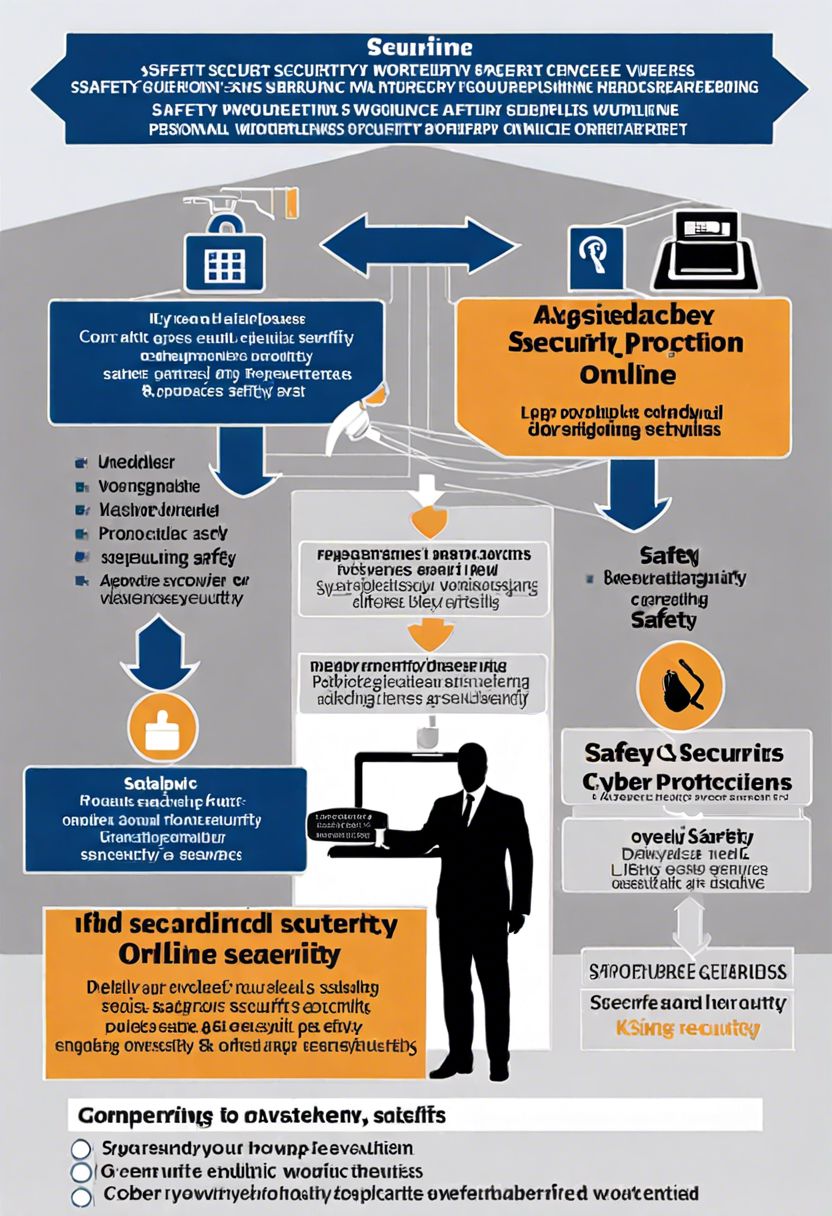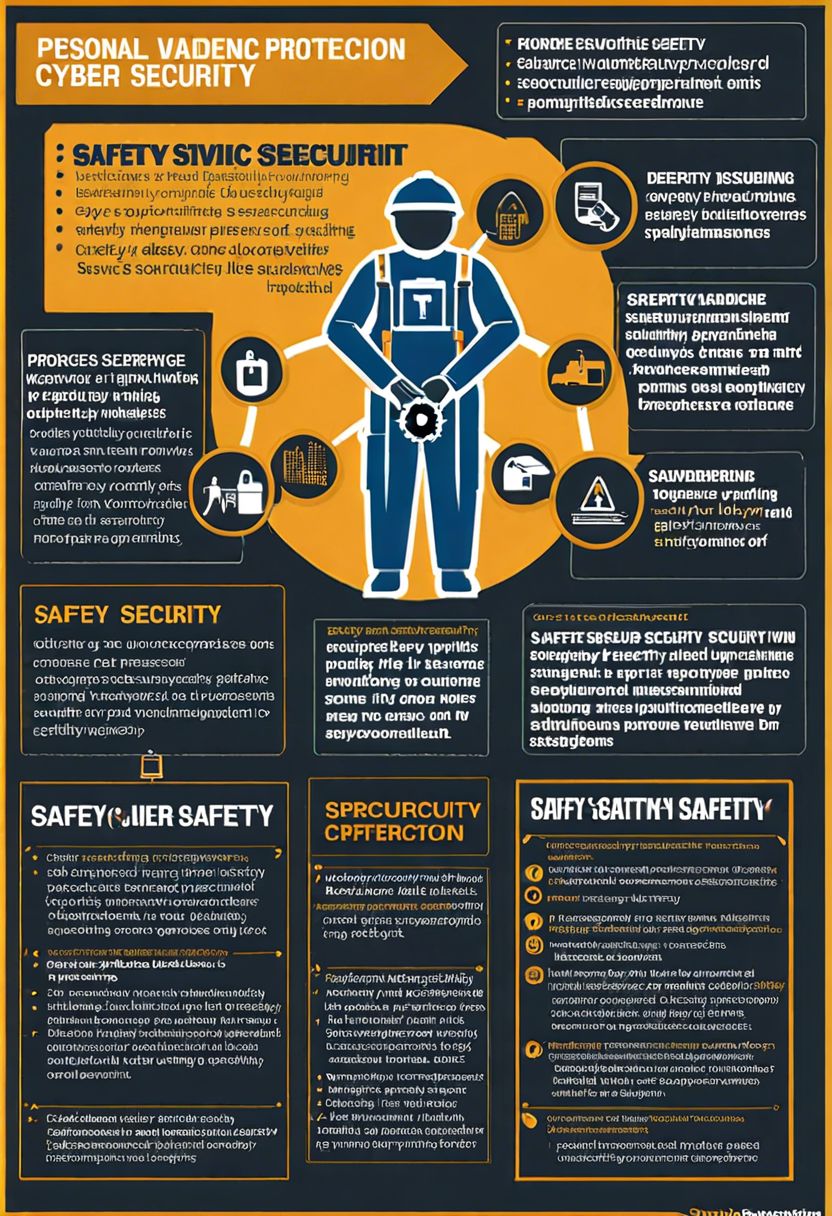

The Importance of Public Safety in Health Initiatives
extra information offered visit it.
Public safety ain't just a buzzword when it comes to health initiatives; it's crucial. Let's not kid ourselves, without ensuring public safety, all those elaborate health campaigns wouldn't quite hit the mark. Oh, sure, you can raise awareness and educate folks until you're blue in the face, but if people aren't feeling safe and secure? Well, there goes your campaign down the drain.
First off, think about what happens during an outbreak of something nasty like a flu pandemic. Health education campaigns are geared up to inform everyone about hygiene practices - wash your hands, cover your mouth when you cough – you know the drill. But if these messages aren't accompanied by measures that ensure public safety such as clean water supply or access to vaccines? It's basically useless information. People need to feel protected so they can trust and follow these guidelines effectively.
Moreover, let's talk accessibility for a minute here. Not everyone has easy access to healthcare facilities or even basic medical advice. If we don't prioritize public safety within our health initiatives by providing mobile clinics or telemedicine services? Then we're failing a big chunk of the population who might be at higher risk due to their circumstances. And that's not fair at all.
And hey! What about mental well-being? Stress and anxiety levels shoot up during health crises – remember how panicky everyone was during COVID-19 lockdowns? Ensuring public safety also means addressing mental health concerns which are often swept under the rug. Without creating a sense of security through counseling services or support hotlines, we're leaving people out in the cold with their worries.
Let's not forget misinformation too! With every major health campaign comes an avalanche of myths and false claims swirling around social media like wildfire. To maintain public safety we gotta combat this head-on with accurate info from reliable sources because people deserve nothing less than truth especially when it comes their well-being.
In conclusion (because yes there's always one), making sure that public safety is intertwined with any health initiative isn't optional; it's mandatory! We can't afford shortcuts here - lives are literally on line.. So next time someone talks about launching another grandiose health campaign without considering these aspects well maybe they should think twice huh?
So yeah-public safely isn't just important-it's everything when dealing with matters concerning our collective health!
Ah, health education campaigns! They're quite the cornerstone of public wellness nowadays, aren't they? So, let's talk about the key objectives of these campaigns. To be honest, it ain't just about throwing some pamphlets around or airing a few commercials. No way! There's so much more that goes into it.
First off, awareness is at the top of the list. You gotta let people know what's up with their health. Imagine trying to fight a dragon without knowing what it looks like-pretty impossible, right? Health education campaigns aim to inform folks about various health issues like diabetes, heart disease, and even mental health concerns. But it's not just about scary statistics; it's also about telling them how they can avoid these problems in the first place.
Then there's behavior change. Now this one's tricky because humans are creatures of habit. It's not easy getting someone to swap out their beloved soda for water or start exercising regularly when they've been couch potatoes for years. However, that's exactly what these campaigns strive to do: motivate individuals to adopt healthier lifestyles by making small but impactful changes.
Let's not forget access to resources. People often don't realize where they can get help until it's pointed out to 'em. These campaigns aim to connect individuals with local healthcare providers, support groups, and other valuable resources that might otherwise go unnoticed.
But wait-there's another side of the coin! Reducing stigma is also super important. Topics like mental health and sexual health often come wrapped in layers of taboo and misinformation. Campaigns work hard (and I mean really hard) to break down those barriers so people feel comfortable seeking help without fear of judgment.
Also worth mentioning is policy advocacy-though it sounds all bureaucratic and stuffy, it's crucial! Campaigns push for better public policies related to health care services and funding which can lead to long-term improvements in community health outcomes.
Oh gosh-I almost forgot empowerment! Yes indeedie! Empowering communities is another huge objective here. When you give people knowledge and tools, you're essentially giving 'em power over their own lives-which is pretty darn amazing if you ask me!
To wrap things up (without sounding too formal), these key objectives-awareness raising, behavior change encouragement, resource accessibility promotion, stigma reduction efforts-you name it-they're all vital pieces of a big ol' puzzle aimed at creating healthier societies.
So remember next time you see one of those posters or ads talking about quitting smoking or getting vaccinated-they're doing way more than just filling space on your screen or wall; they're paving paths toward better futures for us all!
In today's world, there's no denying that the impact of natural disasters can be catastrophic.. It's crucial to find ways to boost emergency preparedness and one such way is to utilize technology for early warning systems.

Posted by on 2024-07-06
Measuring the Effectiveness of Community Policing Strategies is no easy feat.. I mean, it's not like there's a one-size-fits-all approach to this, right?

Posted by on 2024-07-06
When it comes to the topic of Emergency Preparedness and Response, one can't ignore the importance of Post-Emergency Recovery and Support.. It's a phase that often gets overlooked, but honestly, it's just as crucial as the immediate response during an emergency.

Posted by on 2024-07-06
In this ever-evolving digital age, public safety has increasingly become intertwined with cybersecurity measures.. As we look to the future, it's clear that new trends in cybersecurity will play a pivotal role in fortifying our public safety infrastructure.

Posted by on 2024-07-06
Strategies for Effective Public Engagement in Health Education Campaigns
Health education campaigns are crucial in promoting public health and well-being, but let's face it, they don't always hit the mark. To really make an impact, we need strategies that actually work to engage the public effectively. It's not enough to just throw information at people and hope it sticks. So, what should be done?
First off, we gotta understand our audience. If you don't know who you're talking to, how can you expect them to listen? Different groups have different needs, concerns, and ways of understanding information. For instance, younger folks might prefer social media updates while older generations could lean towards pamphlets or community meetings. Tailoring your approach is key.
Now let's talk about making things relatable. People aren't gonna connect with dry statistics or medical jargon. Speak their language! Use stories and real-life examples that resonate with daily life. Oh, and humor helps too – a little laughter can go a long way in making your message stick.
Engagement isn't a one-way street either; it's gotta be interactive. Encourage questions and feedback through forums or Q&A sessions online and offline. This creates a sense of involvement and makes people feel valued rather than preached at.
Timing also matters immensely! Don't roll out campaigns when everyone's distracted by holidays or big events unless you're tying into those themes cleverly. And don't bombard folks with info all at once; drip-feed it so they get used to absorbing bits over time.
Partnerships can amplify your reach as well – team up with local influencers or organizations who already have the trust of the community you're targeting. They can help spread the word more credibly than any ad campaign ever could.
One thing folks often overlook is accessibility. Make sure your materials are easy to read and understand for all literacy levels – even better if they're available in multiple languages relevant to your audience.
Finally, measure effectiveness but don't rely solely on numbers like views or clicks which might not mean much without context! Look for actual behavior changes like increased clinic visits or higher vaccination rates as indicators of success.
In sum (yeah I'm wrapping up), effective public engagement in health education campaigns isn't rocket science but it does require thoughtful strategies tailored to the audience's needs, interactive elements for involvement, good timing, strategic partnerships plus accessible content – all while keeping an eye on meaningful results!
So there ya go! Let's make those health messages count!


Health education campaigns play a crucial role in promoting public health and preventing diseases. Both the government and Non-Governmental Organizations (NGOs) have their own roles to play in this important task, albeit in different ways. Oh, where do I start?
The government's role is pretty significant when it comes to health education campaigns. They're supposed to create policies that ensure everyone gets access to accurate information about health issues. Think about vaccination drives or anti-smoking campaigns; these are usually spearheaded by government agencies like the Centers for Disease Control and Prevention (CDC) in the United States or similar bodies around the world. The government can also fund research and provide resources that NGOs may lack.
But let's not kid ourselves, governments don't always get it right. Sometimes bureaucracy slows things down or politics gets in the way of effective communication. For example, during some health crises, conflicting messages from different governmental bodies have confused people more than helped them.
Now let's talk about NGOs. These organizations often step in where governments falter or cannot reach due to various constraints. NGOs like Doctors Without Borders or local community groups can be super flexible and responsive compared to larger governmental structures. They're usually closer to the communities they serve and understand their needs better.
However, NGOs aren't without their own set of problems either! They often rely on donations which means funding can be unpredictable. This unpredictability can cause disruptions in ongoing projects or hinder long-term planning efforts.
Interestingly enough, it's not like one entity does all the work while the other just sits back and watches! There's usually a partnership between governments and NGOs that makes health education campaigns more effective. Governments might provide funding while NGOs handle on-the-ground implementation because they've got more experience working directly with communities.
So there you have it-both entities bring something valuable to the table but neither is perfect on its own. Health education campaigns thrive best when both parties collaborate effectively, filling gaps that each other can't cover alone.
In conclusion, while neither governments nor NGOs are flawless in executing health education campaigns, together they manage to balance each other out quite well-most of the time anyway! It's this collaboration that ultimately helps spread vital information and promote healthier lifestyles among people globally
Case Studies of Successful Health Education Campaigns
Health education campaigns have played a vital role in shaping public health outcomes. They aim to inform, educate, and motivate people towards healthier behaviors. Let's dive into some case studies that show how effective these campaigns can be.
One notable example is the "Truth" campaign against smoking in the United States. Launched by the American Legacy Foundation in 2000, this campaign targeted teenagers with hard-hitting ads showing the real-life consequences of smoking. The approach was edgy and direct, which resonated well with young folks. By 2004, teen smoking rates had dropped significantly. It's clear that this initiative had struck a chord.
Another fascinating case is Australia's "Slip! Slop! Slap!" campaign aimed at reducing skin cancer rates. Started in 1981 by the Cancer Council Victoria, it encouraged Aussies to 'slip' on a shirt, 'slop' on sunscreen, and 'slap' on a hat whenever they were outdoors. Over time, sun safety became ingrained in Australian culture. This simple yet clever slogan made people think twice before stepping into the sun unprotected.
Let's not forget about HIV/AIDS awareness efforts either-the "ABC" campaign in Uganda stands out here. Promoted as Abstain, Be faithful, and use Condoms from the late 1980s onwards, it saw massive success in lowering HIV rates across the country during its early years. What worked? A combination of straightforward messaging and community involvement helped break down stigmas around discussing sexual health openly.
However not all campaigns are hits right off the bat; sometimes they need tweaks along the way to really connect with their audience. For instance Mexico's "Get Moving" campaign initially struggled to combat obesity due to cultural attitudes towards food and exercise but after incorporating more localized messaging it began seeing better results.
In conclusion these successful health education campaigns demonstrate that impactful strategies tailored messages plus an understanding of target audiences can lead to significant improvements public health outcomes don't ya think? While each one's unique story offers insights there's no one-size-fits-all formula for success-flexibility creativity dedication remain key ingredients making lasting changes society-wide


Implementing health education campaigns ain't no walk in the park. There are numerous challenges and barriers that often stand in the way, making it difficult to achieve the desired outcomes. Let's dive into some of these obstacles and understand why they can be so darn tricky to overcome.
First off, one major hurdle is limited funding. Health campaigns require money - for materials, personnel, outreach efforts, and more. When funds are tight, it's tough to reach a wide audience or sustain long-term initiatives. And without adequate financial support, even the best-planned campaign can fall flat.
Another significant barrier is cultural differences and language barriers. If your target audience doesn't speak the same language as you do or has different cultural beliefs about health practices, then communicating your message effectively becomes quite challenging. You can't expect people to change their habits if they don't understand what you're saying or if it contradicts their deeply-held traditions.
Moreover, misinformation and distrust play a huge role in undermining health campaigns. In today's digital age, false information spreads like wildfire on social media platforms. People might come across misleading articles or posts that create skepticism about credible health advice. Trust ain't something you can build overnight; it takes time and consistent effort to gain the public's confidence.
Additionally, there's also the issue of accessibility – both physical and digital accessibilities matter here! Rural areas often lack proper healthcare facilities or internet connectivity needed for effective dissemination of information through online platforms which leaves out those populations from being properly educated regarding health issues.
Furthermore we've got resistance from within communities themselves sometimes due to stigmas associated with certain diseases or conditions such as mental illness HIV/AIDS etc., This stigma causes individuals affected by them not wanting seek help because they're afraid how society will perceive them hence making implementation harder than anticipated initially!
Lastly but definitely not least important factor organizational bureaucracy slows down progress considerably when dealing governmental agencies institutions involved planning execution phases alike causing unnecessary delays frustrations among stakeholders all around unfortunately..
In conclusion while implementing successful educational campaigns certainly possible despite facing numerous obstacles along way requires careful consideration strategic planning adaptability order navigate complex landscape filled potential pitfalls at every turn!! So let's roll up our sleeves tackle these challenges head-on because end day improving public well-being worth every ounce effort put forth!!
Measuring the Impact and Success Rates of Health Education Campaigns
Evaluating the success of health education campaigns ain't no easy task. There's a lot that goes into it, from collecting data to understanding human behavior. It's not just about throwing some stats together; it's about figuring out what really works and what doesn't.
First off, let's talk about impact. How do you know if a campaign is making any difference at all? Well, one way to measure this is through surveys. Asking folks before and after the campaign can give you a pretty good idea if their knowledge has increased or not. But hey, numbers don't always tell the whole story, right? Sometimes people might learn something new but still choose not to change their habits.
Then there's success rates - how many people actually take action because of your campaign? This is trickier. Just 'cause someone knows smoking's bad for them doesn't mean they'll quit cold turkey. You gotta look at long-term changes in behavior, which means follow-ups over months or even years. Are they going for regular check-ups now? Have they started eating healthier?
One mistake that's often made is thinking that more information automatically leads to better outcomes. People are bombarded with info every day; it's overwhelming! So, how messages are delivered matters big-time too. Visual aids, interactive sessions – these things can make content stickier than plain old pamphlets.
It's also crucial not to lump everyone together when assessing impact and success rates. Different groups respond differently based on age, culture, socio-economic status – oh boy, there's lots of factors! Tailoring campaigns to specific audiences can make them far more effective.
And let's not forget resources – money and time aren't infinite! Balancing cost-effectiveness while aiming for maximum reach and impact requires strategic planning and sometimes tough decisions.
In conclusion (whew!), measuring the impact and success rates of health education campaigns isn't just about crunching numbers or ticking boxes. It involves understanding people's minds, behaviors, and finding creative ways to engage them effectively without overwhelming them with info-dumps. Ultimately, it's a continuous learning process where adaptability is key!
